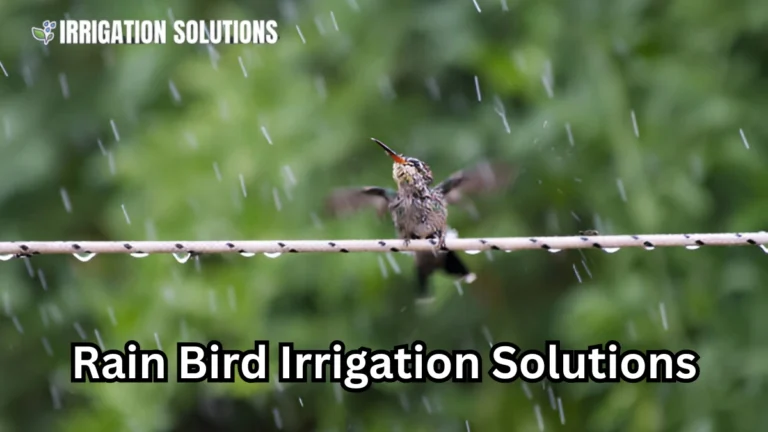best irrigation systems victoria

Irrigation systems play a vital role in supporting agriculture, landscaping, and gardens across Victoria, Australia. Whether you’re a farmer growing crops, a homeowner maintaining a lush garden, or a business ensuring the health of your landscape, having the right irrigation system is crucial. This guide will provide in-depth knowledge about irrigation systems in Victoria, covering types, benefits, challenges, and best practices.
What Are Irrigation Systems?
An irrigation system delivers water to plants efficiently and systematically, ensuring they receive adequate hydration regardless of natural rainfall. These systems can range from simple sprinklers to advanced automated setups that use sensors and timers. In Victoria, irrigation systems are essential due to variable rainfall patterns, particularly during hot, dry summers.
Benefits of Irrigation Systems in Victoria
- Water Conservation
Modern irrigation systems like drip irrigation and smart sprinklers ensure water is used efficiently, reducing wastage. - Increased Crop Yields
With consistent watering, crops grow healthier and produce better yields, a critical factor for Victoria’s thriving agricultural industry. - Time Savings
Automated systems free up time for homeowners and farmers by eliminating manual watering. - Enhanced Landscape Aesthetics
Proper watering keeps lawns, gardens, and landscapes lush and green, even in drought conditions. - Cost Effectiveness
Though initial installation can be expensive, efficient water use and reduced manual labor save money over time.
Types of Irrigation Systems in Victoria
Victoria’s diverse needs require different irrigation systems. Below is a detailed breakdown:
| Irrigation Type | Best Suited For | Pros | Cons |
| Drip Irrigation | Gardens, vineyards, orchards | Saves water, targets roots, reduces runoff | High installation costs, maintenance required |
| Sprinkler Systems | Lawns, large open spaces | Covers wide areas, easy to automate | Can waste water through evaporation |
| Surface Irrigation | Row crops, flat terrains | Simple and cost-effective | Uneven water distribution, high runoff |
| Subsurface Irrigation | High-value crops, gardens | Efficient water delivery to roots | Expensive setup, requires skilled labor |
| Flood Irrigation | Pastures, rice fields | Inexpensive, suitable for large areas | Water wastage, soil erosion |
The Agricultural Landscape in Victoria
Victoria is known for its significant contribution to Australia’s agricultural output, producing 25% of the nation’s food. Key irrigation-dependent crops in the region include:
- Grapes: Vital for the wine industry, especially in regions like the Yarra Valley.
- Dairy Pastures: Require consistent irrigation to sustain milk production.
- Fruits and Vegetables: Peaches, apples, and tomatoes thrive under controlled irrigation.
Challenges of Irrigation Systems in Victoria
- Water Scarcity
Victoria faces water supply challenges, especially during droughts. Efficient irrigation systems are essential to mitigate this. - Soil Salinity
Over-irrigation can lead to salt buildup in the soil, affecting plant health. - Energy Costs
Pumping water, especially for large-scale farms, can be expensive. - Government Regulations
Water usage is heavily regulated in Victoria. Farmers and homeowners must adhere to strict guidelines, including obtaining water licenses.
Best Practices for Irrigation in Victoria
To ensure optimal irrigation, follow these best practices:
- Choose the Right System: Assess your water needs, land type, and budget before selecting an irrigation method.
- Maintain Your System: Regularly check for leaks, clogs, or damaged components.
- Install Smart Controllers: These devices adjust watering schedules based on weather data, conserving water.
- Use Mulch: Mulch retains soil moisture, reducing reliance on irrigation.
- Plan Watering Schedules: Water early in the morning or late evening to minimize evaporation.
Case Study: Drip Irrigation in a Victorian Vineyard
The Problem
A Yarra Valley vineyard struggled with inconsistent grape yields due to uneven watering using traditional sprinkler systems.
The Solution
They switched to a drip irrigation system, which delivered water directly to the roots of each vine. The system used moisture sensors to regulate water application.
The Results
- Water usage dropped by 30%.
- Grape quality improved, leading to a 20% increase in revenue.
- Soil health was preserved, preventing erosion.
Environmental and Economic Impact of Irrigation in Victoria
Irrigation systems significantly impact both the environment and economy:
- Environmental Benefits
Efficient systems reduce water wastage and protect natural ecosystems. - Economic Contribution
Irrigation supports Victoria’s $17 billion agricultural industry, sustaining thousands of jobs.
Tips for Homeowners Installing Irrigation Systems
- Start Small
Install a basic system like a soaker hose before upgrading to advanced options. - Seek Professional Advice
Consult local experts for system design and installation. - Leverage Rebates
The Victorian government offers rebates for water-saving devices, including irrigation systems. - Monitor Performance
Use tools like flow meters to track water usage and identify inefficiencies.
The Future of Irrigation in Victoria
As technology evolves, so do irrigation systems. The future holds exciting possibilities, including:
- AI-Powered Systems
Artificial intelligence can analyze data and optimize watering schedules. - Recycled Water Use
Increased use of recycled water will reduce dependence on freshwater sources. - Solar-Powered Pumps
These pumps reduce reliance on traditional energy sources, cutting costs and emissions.
Final Thoughts
Investing in an irrigation system tailored to your needs can transform your garden, farm, or landscape. With options ranging from drip systems to AI-driven solutions, Victoria offers endless possibilities for efficient and sustainable irrigation.






